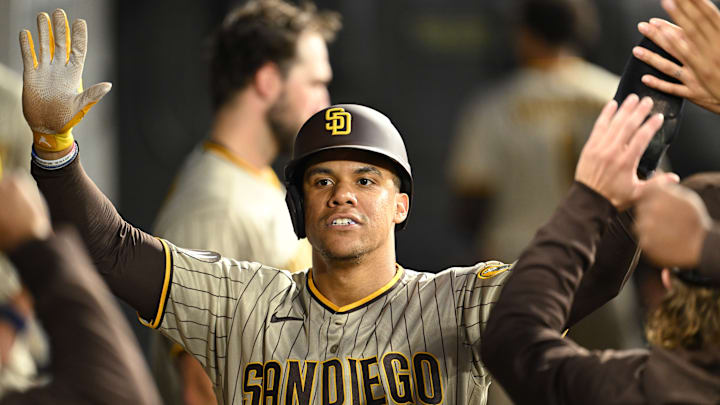When we look at the areas that the Chicago Cubs can improve it’s hard not to find power production from the heart of the order and bullpen deficiencies glaring right back at us. That being said, regardless of perceived areas for growth, when you have an opportunity to add a superstar you have to at least do your due diligence.
Juan Soto is the superstar the Cubs should be doing their due diligence on. The Padres are allegedly shopping the outfielder and with rumors swirling that their ownership team took out loans to pay their players in the 2023 season, it’s not hard to understand why they’d be looking to recoup some of the insane value they gave up to trade for Soto midway through the 2022 season.
Does Soto make sense on paper for this Cubs team? No. Jed Hoyer doesn’t like paying outrageous prices even for his own players, just ask Javier Baez, Anthony Rizzo, Kris Bryant or Kyle Schwarber, and Soto allegedly turned down $440 million dollars from the Nationals less than two years ago.
That being said, Soto is the exception to just about every rule. He came into the league as a 19-year-old and didn’t just get a cup of coffee. He played in 116 games and hit 22 homers while maintaining a slash line of .292/.406/.517. His career slash line is .284/.421/.524 and last season he played all 162 games on his way to his third all-star appearance prior to his 25th birthday.
There are a fair number of critics that will point to Soto’s willingness to draw walks rather than swing the bat and wonder if the Cubs would be exacerbating a toothless lineup with regard to their power numbers. That being said, Soto hit 35 homers last season and added another 33 extra-base hits on top of it. Sure, his OBP from last season outpaces the Cubs' best producer Ian Happ by nearly 50 points, but his slugging percentage would have been second only to Cody Bellinger on the 2023 squad.
